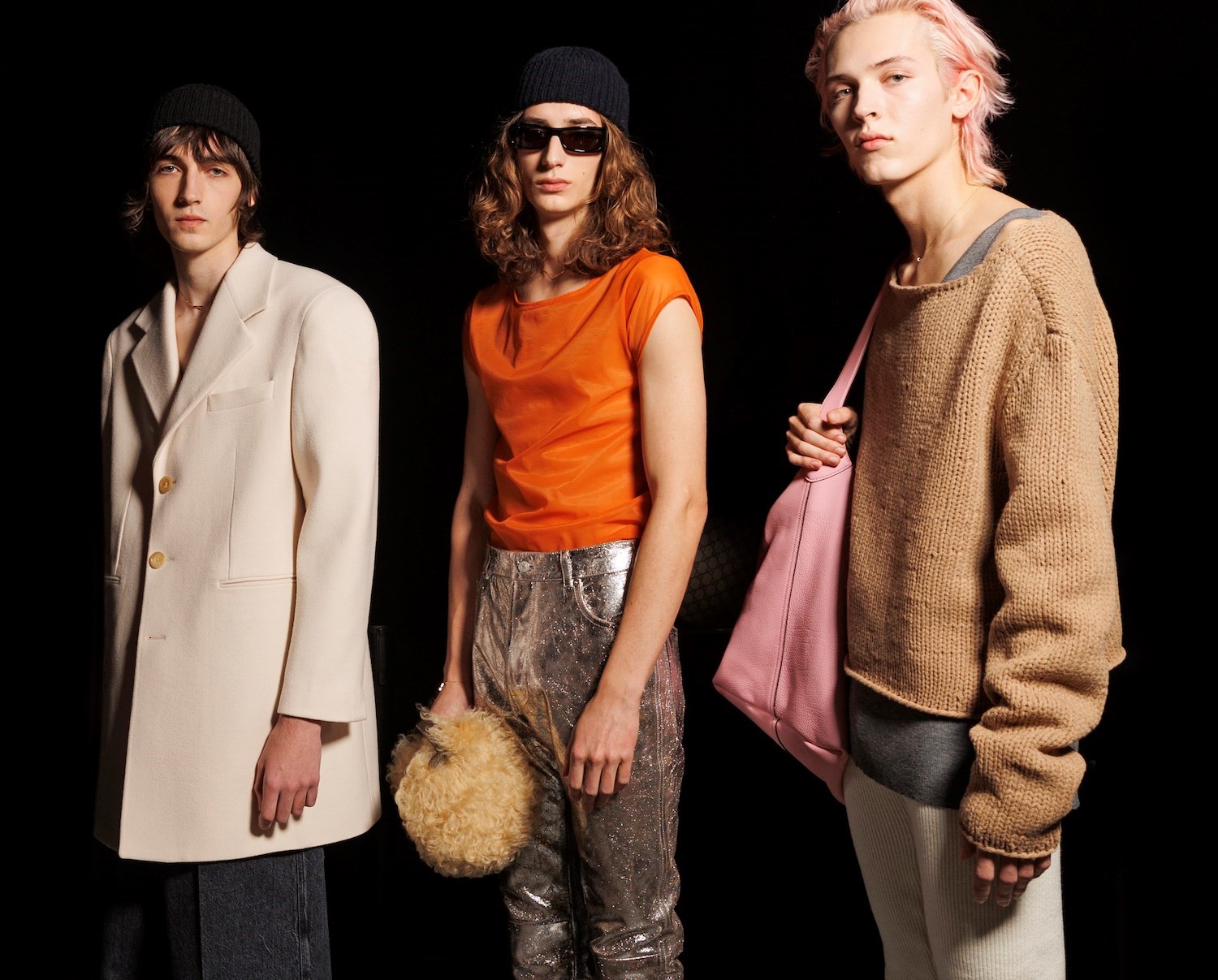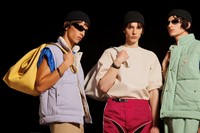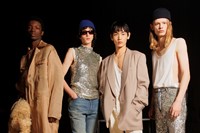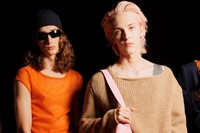The roots of Gucci’s Autumn/Winter 2023 menswear collection – and its first standalone men’s show in three years – was writ large across the back of a jacket, via a label unearthed from the label’s storied and, as of 2021, century-deep archive. ‘GUCCI: Firenze-Roma-Milano-New York’. Those four cities, dissected and digested, shaped the collection’s aesthetic.
Firenze was the birthplace of Guccio Gucci – the founder’s real name, I hasten to add. It was and remains a centre of artisanship, of generations of craft, especially around leather goods. Rome is where Gucci resides today, a city shaped by history, where modern life exists side by side with ancient marvels and masterpieces. Milano is the centre of Italian fashion, where Gucci was catapulted to contemporary relevance and international covetability by Tom Ford in the mid-1990s. And a fashion brand having an outpost in New York City was – and kind of reminds – an archetypal, glamorous mark of ‘making it’, of a fashion label going truly global. And actually, Gucci invented that – in 1953, when Gucci opened a boutique on Fifth Avenue, it was the first-ever Italian luxury goods brick-and-mortar store opened stateside, which is where that label originated. A decade or so later that store, of course, famously sold a bag to Jackie Kennedy. You can still buy it today.
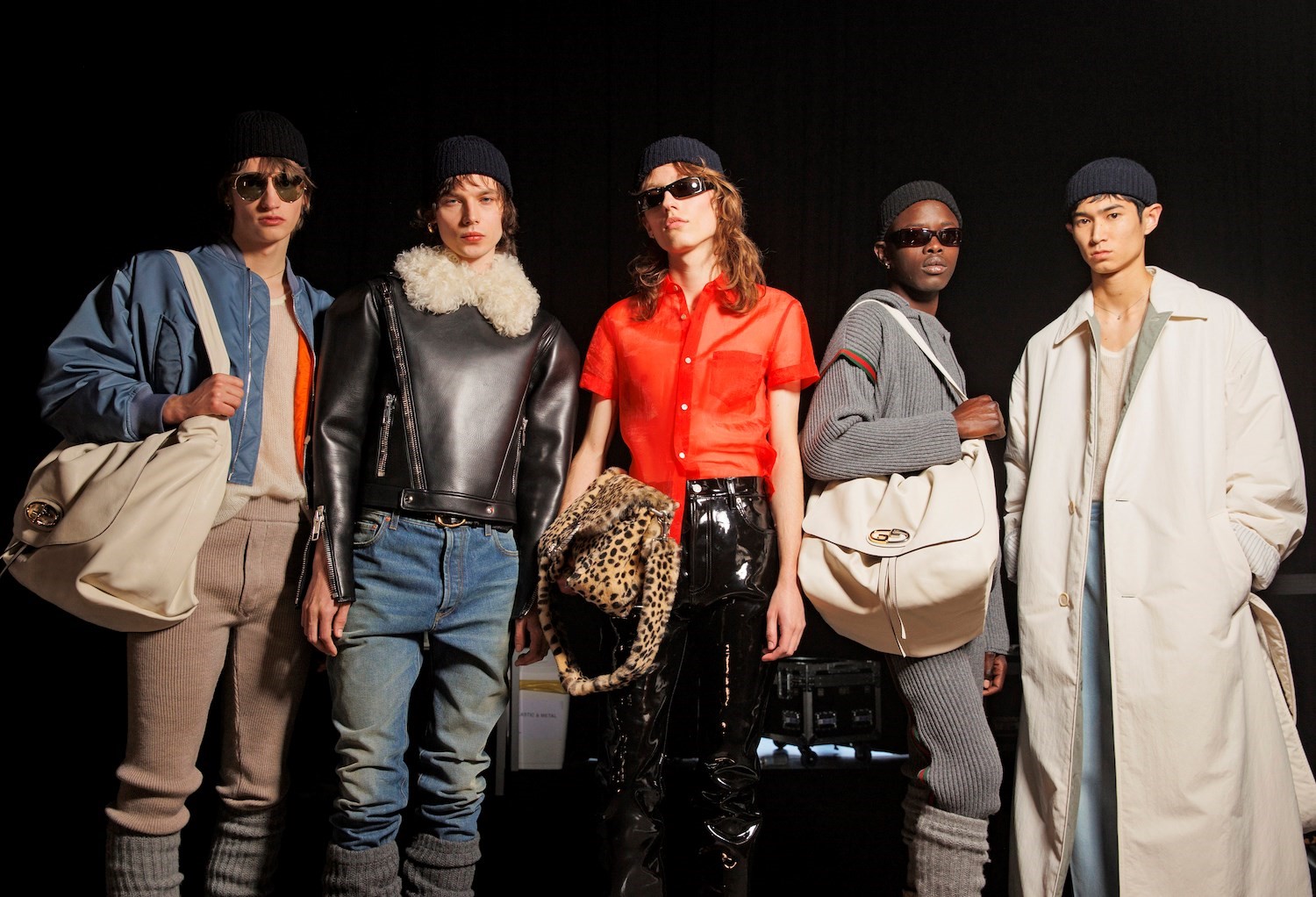
So, we’re talking Gucci history – which was the focus of this show, the first presented after the departure of creative director Alessandro Michele in November, executed by a team including many recruited by him, and some who have worked alongside Gucci’s designers for decades. The roaming through history included the far-flung reaches of elongated tailoring with the interwar air of Gucci’s earliest years, through logoed styles unearthed from the seventies and sportswear with an 80s vibe, to items inspired by the tenure of Ford and of Michele too. Gucci’s modern icon the Dionysus got a new workout in faux fur; a piston-lock used by Ford as minimalist hardware was re-appropriated, while the scuffed, lived and loved jeans could have come from either of their tenures. Soft tailoring in macaron colours – lilac, ivory, parma violet – had a timeless quality. And so did delicate knits, a hazy hint of sexiness.
There was a quietness to this collection – not to the presentation, soundtracked live as it was by Marc Ribot’s Ceramic Dog, but to the clothes themselves. A gentleness to their colours, cuts and shapes, a moment of repose and rest at a pivotal point in Gucci’s history. This was a collection full of possibilities for future direction and regeneration, and also full of promise. But more pragmatically than that, it was full of great clothes – the aforementioned tailoring was standout, while a pair of jeans bedazzled with the Gucci logo warranted a spotlight all their own. In a sense, this was a retrenchment and a reassertion of the power of Gucci. A century old, and still going strong.
